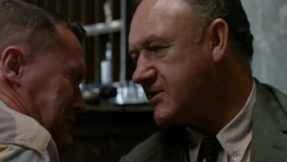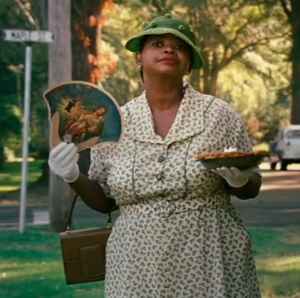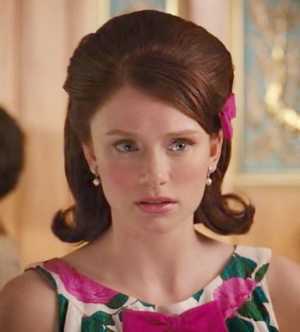The Civil Rights Era in Film: Four Tired Tropes and Why They Have to Go
The Civil Rights Era is hugely popular in historical fiction. In film, the subgenre has produced some of the most loved movies in the medium’s history, both by critics and audiences. Movies such as Mississippi Burning (1988) and The Help (2011) were praised for presenting a complex interpretation of an ugly and difficult past. Mississippi Burning takes place in 1964 and follows two FBI agents (Gene Hackman and Willem Dafoe) who are sent to Mississippi to investigate the disappearance of three civil rights workers. Once they get there, they find the local law enforcement to be incredibly corrupt and unhelpful, and their job becomes much harder than they expected. The film was nominated for seven Academy Awards and won one, and Roger Ebert called it “the best American film of 1988. (Ebert)
The Help approaches Civil Rights in a different but no less dramatic manner. It revolves around an aspiring writer named Skeeter (Emma Stone), who after realizing the injustice suffered by the maids who work for her friends, offers to anonymously tell their stories in a book that becomes a local sensation. It was one of the most popular films of the year, and was nominated for four Academy Awards (including two for Best supporting actress), as well as a slew of other awards.
Because of their popularity, these two movies define the standards of the subgenre in many people’s minds, and as such are perfect examples of the devices Hollywood thinks it has to resort to to make the subject appeal to a mass audience. Though not all movies will use all these tropes, it’s rare for a movie depicting race relations to avoid using at least one. It’s easy to see why Civil Rights has become such a popular backdrop for film. It’s a highly charged and therefore naturally dramatic time in the country’s past, far enough away to feel comfortable talking about it and yet close enough to still be thrilling, like the proverbial train wreck.
However, the devices Hollywood uses to sustain this feeling do more than memorialize history. By constructing a set of tropes around a real event, Civil Rights Era movies force a specific type of narrative where there historically wasn’t one. These are devices Hollywood uses time and again, systematically presenting an inaccurate and strangely nostalgic version of a very real and painful time period. These films don’t just interpret history, they revise it. Here, in no particular order, are those tropes.
1. The White Savior
See also: To Kill A Mockingbird, Ghosts of Mississippi, Glory Road

This is a trope that tends to pop up in any story concerning race relations, so it’s no surprise that the White Savior is a crucial part of the Civil Rights Era narrative Hollywood has constructed. He/she is smart, spunky, and white as can be. These characters are always singular and special in that they are the only ones in their (always Southern) community who finally dares to recognize racism as a problem. Eventually, they put their own reputation and safety on the line to make a difference that would not have been possible without them. Some of the most loved movies in history heavily feature a White Savior.
It’s commonly acknowledged that Hollywood has a bad habit of assuming that its audience is primarily white. Yet somehow, many films set in the Civil Rights era manage to assume just that and get away with it. This is because the White Savior, as a racially specified character archetype, is there to reaffirm the attitude that the presumably white audience already had going into the movie. The White Savior is a character specifically designed to make the viewer feel good about him or herself, and as such, he/she safeguards against the risk disturbing any of the audience’s previously held views of race conflict.
When Agent Anderson (Gene Hackman) flouts all rules of the FBI in Mississippi Burning and goes on his violent one-man justice crusade against the racist Mississippi law enforcement, we are asked to think of his vigilantism as a moral and even patriotic act. The problem with this is that Agent Anderson occupies a role which never existed in the real struggle of Civil Rights. His character is a fantasy, and the audience is given no choice but to be grateful that the FBI was there to “rescue the submissive, illiterate, quaking black people unable and unwilling to stand up for themselves.” (Chafe 276)
2. The Subordinate Black
See also: The Butler, Driving Miss Daisy, Radio

Implicit in the idea of a White Savior is that there is someone to save in the first place. In too many cases, black characters are the victims of prejudice, but are never the agents of their own justice. Instead, they are reduced to such an inert status that, according to the narrative structure of the film, their only hope of salvation lies in their white hero. Black characters in these movies exist mainly for the social enlightenment of the film’s white main character. They have no onscreen life besides their work, and their role is subservient and apparently relatively content to be so. In Mississippi Burning, people of color are hardly characters at all, and instead simply act as a mass of people so oppressed and uneducated that they are apparently incapable of understanding the possibility of any other life.
The Help, for all its critical and popular acclaim, is extremely guilty of demeaning its black characters. Until Skeeter offers to tell the black maids’ stories, they are completely unwilling to have any kind of active role in the Civil Rights movement. Curiously, this remains true even when Minny (Octavia Spender), one of the maids, stands up for herself. Minny’s actions, though sassy, are ultimately ineffective as a tool for her own independence. Her defiance of the rules she lives under are treated as a cheap source of humor throughout the movie, as she isn’t presented as capable enough to think up anything more sophisticated than feeding her former boss a particularly nasty pie.
3. The White Devil
See also: Hairspray, A Time to Kill, The Intruder

Racism in many Civil Rights movies is not discussed in terms of cultural tradition. Hardly ever do the characters of a movie simply grow up with racism to the point that they don’t notice it anymore, no matter how well-intentioned they might be. This is the truth of how racism persists, but the sociological story of racism does not make for good drama. Rather, there has to be a physical embodiment of racism. Usually a singular person, but sometimes encompassing a small group (as in Mississippi Burning‘s white law enforcement), this trope can best be described as the opposite of the White Savior. If the White Savior is engineered to be a person the audience can relate to, then the villain of the movie exists to compare themselves against. The type of racism shown in this trope incites emotion, but it’s a morally superior kind, which allows the audience to judge the failures of everyone in the movie without seeing any of these traits mirrored in themselves. The Help once again outdoes itself in this regard with Hilly Holbrook (Bryce Dallas Howard), Minny’s impossibly evil white boss, who kicks off the entire plot of the film by advocating for separate bathrooms for black maids because, as she says, blacks “carry different diseases.”
The presence of such a caricature suggests an interesting attitude these films have toward racism. Though people like Hilly have no doubt existed, their obnoxious form of racism has never been the norm. However, Hollywood continually insists on portraying it this way. It makes for good drama, but more importantly these types of portrayals suggest that there was once a time when societal problems were clear, understandable, and as a result, safe. In portraying anyone who’s racist as a ridiculously evil White Devil, Hollywood treats racism as a plot device, ignoring the cultural and personal factors that make it so hard to eradicate and instead appearing to long for a time when evil was so easy to spot.
4. The Traditional South
See also: Forrest Gump, The Secret Life of Bees
The American South is an iconic place in many ways, and the aesthetic of films set in the region capitalize upon this idea. Hollywood particularly seems to be in love with the image of vintage American South. The Help is shot with beauty in mind: everyone has perfect hair and lovely dresses, everything is lit in green and gold, all the houses are gorgeous. Arguably, this is America idealized. Alternatively, Mississippi Burning shoots its setting almost as if Mississippi were a completely foreign country, savage and untamed. In both cases, the racial conflict inherent in the 1960’s is not depicted as an American problem. Rather, it is a Southern problem, the result of a backward and evil community that has chosen not to progress with the rest of the country.

Hollywood manages to combine both these ideas into one conglomerated image of the American South that, it is important to note, never existed. Instead, the entire region is reinvented for style, suggesting a destructively nostalgic attitude Hollywood has toward an extremely painful time in America’s past. In The Help, the dangers to the maids never seem real. Realistically, Minny’s stunt with the pie would almost certainly have resulted in her death, yet the entire situation is played for laughs. On the other hand, Agent Anderson’s bloody conflict with the local law enforcement is portrayed as a necessary evil, playing by an imaginary Southern social code that spits in the face of civilization and needs a hero with savvy and strength to come tame it.
It’s tempting to think of film as solely a medium for entertainment, but in a time when screens have become our main source of information, film shapes our perception of history in a very real way. The white-centric and exaggerated character archetypes employed by Hollywood in its treatment of Civil Rights distorts history to the point of reinvention. Historical fiction, like science fiction, is usually seen as allegorical to present-day events. If the White Savior trope is designed to tell the audience that they were right all along, then where is the room for self-reflection? Where is the challenge to comfortable sensibilities that we have come to expect in a well-done allegory?
Relegating black people to a supporting role in their own struggle for equality implies that Civil Rights was primarily a white problem, and would not have been resolved were it not for white benevolence. This, in addition to the morally superior attitude these films encourage in their audience, is a destructive and dangerous trend. The history of the Civil Rights movement looks decidedly different from the way it is portrayed in film, but Hollywood has a disturbing habit of disrespecting this fact, turning the subgenre into nothing more than a vehicle for nostalgia.
Work Cited
Chafe, William H. Past Imperfect: History According to the Movies. Ed. Mark C. Carnes. New York: H. Holt, 1995. Print.
Ebert, Roger. “Mississippi Burning Movie Review (1988) | Roger Ebert.” Rogerebert.com. N.p., n.d. Web. 29 Oct. 2014.
What do you think? Leave a comment.











8 Mile and American History X weren’t mentioned as movies that promoted Civil Rights.
I’d argue that the editing process and director Tony Kaye’s complex relationship with the film makes American History X a pretty dicey addition to this discussion: http://www.theguardian.com/film/2002/oct/25/artsfeatures.advertising
Very good list of great movies and I agree, some of these troopes got to gooooo! I’d like to add The Ernest Green Story to the list.
Add in BOYCOTT, GHOSTS OF MISSISSIPPI, and ONCE UPON A TIME WHEN WE WERE COLORED.
Mississippi Burning is actually possibly the worst movie ever made about the civil rights movement. It is historically inacurate and fails to even capture the historical themes necessary to create a relevant civil rights movie. FBI agents who were sent to Mississippi did little more than take notes. Most were friendly with local law enforcement and often took their side. Local Mississipians are portrayed in this film as frightened and looking for salvation despite the fact that the movement in Mississippi was primarlily a grassroots effort. The only good thing about this film is that it inspired two of the best civil rights movies (at least in relation to Mississippi): Freedom Song and Murder in Mississippi. However, these are both made-for-television movies. They are difficult to find rarely given their due recognition.
The Help made me feel horrible about my obvious problem; being white.
I think what’s “well-done” (I am using this loosely) about these films is how natural they make the tropes feel. It is not until you allow yourself to think critically that you realize that these films have these kinds of awful tropes in them.
Loved your article. It was well-written and researched, learning about the tropes. Honestly, for The Help, I preferred the book over the movie, but you provided a valid argument: how the Civil Rights Movement was a “white problem.” Great job.
Mariana thank you for this important article it is a great platform piece to being dialogue.
Is there some reason why Nothing But A Man, an independently produced film, made at the height if the civil rights era, never makes it to any such discussion?
Yep! What I’m focusing on here is the type of story that the system of Hollywood considers worthy of attention and acclaim. Movies like Malcolm X are rare, and even it was not nearly as praised as either Mississippi Burning or The Help, which were two of the most popular movies of their year. Of course there are movies that portray the Civil Rights era in a sensitive and historically accurate manner, Nothing But A Man included. But, as you said, it’s an independent film, and it didn’t get nearly the amount of popular attention it would have if it had complied with and been supported by Hollywood standards of the genre. Thanks for your comment.
Mr. Lee’s “Malcolm X” is easily the most ambitious and hyped fictional film by a black director on any aspect of the movement
I appreciate Mr. Lee’s film “Malcolm X.”
Mississippi Burning (1988) is a great movie on this era.
I feel that this article was well-written and causes the reader to remember that a movie is just that–a movie and not necessarily true to life, depending on its genre. I feel that these tropes were well-documented and focused on. I felt satisfied with what I learned from reading your article. This article reminds me to use my critical brain while viewing a movie to watch for an agenda that the director intends his or her creation to have.
It is interesting to see stereotypes in movies about stereotypes. Like you stated, I suppose they are tropes we understand and follow, but they are getting old. What films break these archetypes?
I definitely appreciated Mississippi Burning more the second time around. Thanks for the great post.
Well contextualized analysis of important movies, thank you.
I really enjoyed your article and ironically enough I was just watching The Help last night on television and couldn’t help but think that it was perpetuating stereotypes so I appreciate your article for completing my thought process!
This was super interesting to read. Admittedly, I haven’t seen most of the movies discussed, but I could definitely understand what you were talking about. I think the film industry sorely needs better representation of what racism actually is. (Or any kind of -ism for that matter.) Because usually it’s not someone being ‘evil’ for evil sake, it’s someone who doesn’t understand and is ignorant and needs to be educated. The closest thing I can think of that’s out there is in Wreck it Ralph when Ralph’s counterpart goes from seeing Ralph as an associate to a friend to a brother. That kind of gradual growth through personal reflection and realization is hardly ever seen in media, unfortunately.
I’d like to see a discussion of Ganja and Hess at some point.
http://en.wikipedia.org/wiki/Ganja_%26_Hess
It’s a film that received funding during the era of Blaxploitation horror (Blackula, Sugar Hill, JD’s Revenge, etc) but the director, Bill Gunn, subverted the producers intent for a quick, cheap exploitation flick by making a complex (though flawed) art film that deals with class as much as any supernatural concepts.
http://www.avclub.com/review/ganja-hess-73693
Thank you so much for highlighting the “White Savior” trope. This is tired, overused and does little to change peoples minds about who can or can’t be part of a solution. Well done
What about Freedom on My Mind from 94?
Again, it’s not that there simply aren’t movies that present a complex and challenging image of the Civil Rights era. There absolutely are. But those movies are not produced or supported by Hollywood to anywhere near the degree that The Help and Mississippi Burning, among others, were. The problem is the kind of story that the dominant studio system considers worthy of acclaim.
Although you have done a good job of highlighting some of the tired television tropes that we see all the time, it seems like you picked relatively OLD movies to use as comparisons. One would think that if these tropes were so prevalent, it would be easier to come up with contemporary examples.
Thanks for your comment! I’d call Hairspray (2007), The Help (2011) and The Butler (2013) pretty contemporary, but that’s a good point. I picked the presentation of the Civil Rights era to focus on because I thought it was the most overt example of trying to revise history. If you’d like to expand the genre to other well-loved historical fiction with racial themes you can still see a lot of these tropes (The Blind Side, Invictus, Freedom Writers, 12 Years A Slave, etc.).
This article reminded me of a discussion I once had. Sorry if this is unrelated but I noticed how in movies we see today there is a general role for black people in them. In horror movies, it’s the black guy that always dies first. In an film with Morgan Freeman, he plays into the black savoir/guiding voice for white people. Along with your article I think this shows some of the problems of racism today. Especially since pop culture and media are so widely consumed today I think it’s important that we recognize it as a problem and try to fix it. I loved your article.
Thanks so much for your comment! Yeah, I’ve definitely noticed the same thing. I don’t remember who wrote it, but there’s definitely a paper or essay out there that talks about the Magical Negro trope you’re describing. It says something about how it’s based in the idea that black success or goodness is so preposterous that it has to derive from something supernatural or otherwise unhuman. And always for the betterment of the white protagonist, of course.
Not that it really has to do with the civil rights movement… I just felt this movie has all of the tropes you listed in three hours of blaxploitation drama. The movie I am thinking of is Django. It has all these stereotypes, and are exaggerated to the tenth power! Just a random thought.
Yeah! That’s a good point! Django Unchained is an interesting example because Tarantino is self-professed as one of those people who was literally raised by movies; movies are his main experience of the world. So my theory is he thought he was just making some cool action movie and put no thought into the racial implications of it. I don’t know about you, but sometimes I wasn’t sure whether I was supposed to think something was funny in that movie or not. A lot of the audience I was in laughed at things I didn’t think were funny AT ALL. It’s a troubling movie, but kind of an interesting social experiment.
I feel like this article brings to light how easily the line between history and historical fiction can be blurred. As un-biased as a writer or director may claim to be, like history, it is written from a particular position in life and a very particular relationship (or lack thereof) to the events about which the author is writing. I do agree that certain themes do become common among these retellings, but I do not believe the particular writers would have been able to avoid doing so (effectively) due to their own understanding and relationship to the material which they are describing. Everyone sees the car wreck from a different angle; sure, some may be more “right” or “wrong”, but each will be distinct.
I must say, I have a near visceral reaction to white savior figures in film, and more broadly, in our collective historical tales about the Civil Rights Movement; it plays into a subtly hinted but incredibly virulent racist ideology that the only reason we are even getting anywhere close to racial equity in the West is because Whites “let” it happen. At the risk of suggesting a severe solution to the problem, one is tempted to invoke the more radical sort of identity politics, and argue that only those upon whom racist practices were enacted (and I’m using Beverly Tatum’s definition here, concerning mainly structural and institutional material effects of racism, not simply “racial prejudice”) should have the opportunity to communicate these histories.
I’m surprised a movie like Remember the Titans (as much as it pains me to say it) has not come up on this list. Literally through the power of football for one season, the TC Williams Titans seemingly solved all of their entire city’s racism problem. Each white character seems to be an archetype juxtaposed against the POC characters.
I considered it, but couldn’t decide which trope to put it under. Thanks for bringing it up; it’s another problematic film in a lot of ways.
May I shake your hand through the internet? Thank you. Thank you for demanding a more realistic and complex interpretation of the civil Rights movement. I just want to shake your hand becuase through out the entire article I kept screaming “Yes Yes Yes”. You clearly know what you are talking about and I can’t wait to hear more!
Haha, thanks! I appreciate it. 🙂
I thoroughly enjoyed reading this article. However what I think might be an interesting supplement to your argument are the various ways in which the tropes you mentioned above are carefully crafted (re)productions (I am using this in the post-modernist sense and in the spirit of what you were saying, the production of these troupes is in fact a reproduction of which there is no original copy) of synthetic black bodies used to well (re)create the visual equivalent of Jim Crow laws.
I know that might sound a little heavy handed, but I do have a theory to back it up.
Consider the rigid typecasts that you very eloquently described above as being sort of the Tyler Perry ‘goldmines’ of today’s film. It should come as no surprise then that alternative modes of showing black bodies are reciprocally motivated by a severe lack of funding. By insulating the mode of (re)production within its own hegemonic apparatus Hollywood is thereby free to experiment with various formal aspects of film in the (re)production of synthetic black bodies. Several of note being blackface, diversity shots, the introduction hip hop soundtracks, cartoon caricatures (see Bamboozled (2000)), and specific lighting techniques specifically designed to make the black body appear more or less natural.
This is a policing of black bodies that Frantz Fanon eloquently wrote in spite of. The combination of the films phantastic effect on its viewers combined with the formal aspects of film slave to the hegemonic and relentless ideological apparatus that is Hollywood has (re)produced a notion of black bodies and by extension the Civil Right Movement by introducing entirely obedient and ‘harmless’ tropes that bring nothing of historical merit to the conversation. They simply produce a narrative that supplements the already virulent dominant ideological story. The American South was once frightening home to “tom-toms, cannibalism, intellectual deficiency, fetishism, racial defects, slave ships, and above all else, above all: sho’ good eatin.”
A very interesting post indeed.
Works Cited
Fanon, Frantz. “The Fact of Blackness.” Critical Visions in Film Theory: Classic and Contemporary Readings. Ed. Timothy Corrigan, et. al. Boston: Bedford/ St. Martin’s, 2011. N. pag. Print.
This article raises several great points. We are missing films where the African Americans act as agents of their own destiny, and the charicatures of racist whites has to go. This was fun to read and well cited.
Really interesting. I like how articles like this show the broader significance of film and other media. Very well said and a good range of films used.
Great article, keep up the awesome stuff.
The genre merely scrapes the tip of the iceberg. Because we’re of vastly different generation, we can create not-entirely-accurate representations of the period and certain events. Movies like The Help, The Butler, and 12 Years a Slave seek to tell haunting stories and set specific agendas worth paying attention to.
I love The Help, but I can acknowledge that it’s extremely problematic in its representation of race relations. Although she’s played by the wonderful and beautiful Emma Stone, Skeeter is a textbook example of the White Savior archetype, very similar to Atticus in To Kill A Mockingbird. Furthermore, The Help depicts the struggles of the African American race during this time as almost trivial in nature, diminishing the concerns to nothing more than the concept of outside bathrooms. The problem with these tropes is that they stem from stereotypical portrayals and caricatures that originally appeared at the inception of film, and therefore, while we all wish they’d go away, will probably be engrained into our society for years to come.
How do you think film should respond to something like what’s happening in Ferguson? Showing racism on film is certainly nothing new but the Ferguson situation is unique. And especially the fact that it’s happening in modern times, as opposed to most race films that are set during the Civil Rights Movement. I think there’s the opportunity for a really powerful film here.
That’s an interesting question. I think Fruitvale Station got pretty close (though it was still a little too melodramatic and symbolic for my taste), and since race relations is still a huge issue, arguably more so now than ever since Civil Rights, there are going to be a lot of opportunities for the industry to re-evaluate how they portray racial topics. I try to think optimistically. I really do think it will get better, especially as filmmakers and everyone in the Hollywood system get more diverse.
The White Devil trope is the most dangerous of the four, in my opinion, because it allows white people off the hook and doesn’t force them to confront their own racial prejudices. Racist villains in movies are so obnoxiously or comically evil that the audience doesn’t really view them as someone who could be around today, when really many people are simply unaware of their privilege and prejudices. Reminds me of this great Bill Burr bit:
https://www.youtube.com/watch?v=nN9hy4YNIv0
Sadly, the reason these tropes took hold is that, to use an old expression, is that we want to appeal to our better angels and ignore our worse demons. People still find it shocking that segregation was a way of life for many Americans, and not just in the South. Ironically, one of the better, closer to accurate films about this period was B-movie king Roger Corman’s The Intruder, about an outside agitator creating havoc in a small town in the midst of the desegregation debate.
It’s insane to think how much films in themselves influence people today. I love question you brought up of where is the self reflection if there is a savoir of that race. I think that applies to anything considered controversial.
Since this article was posted, Selma appeared and was a commercial and critical success. Does this change things?